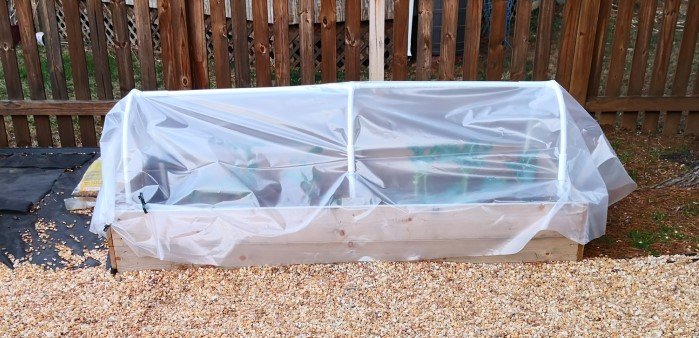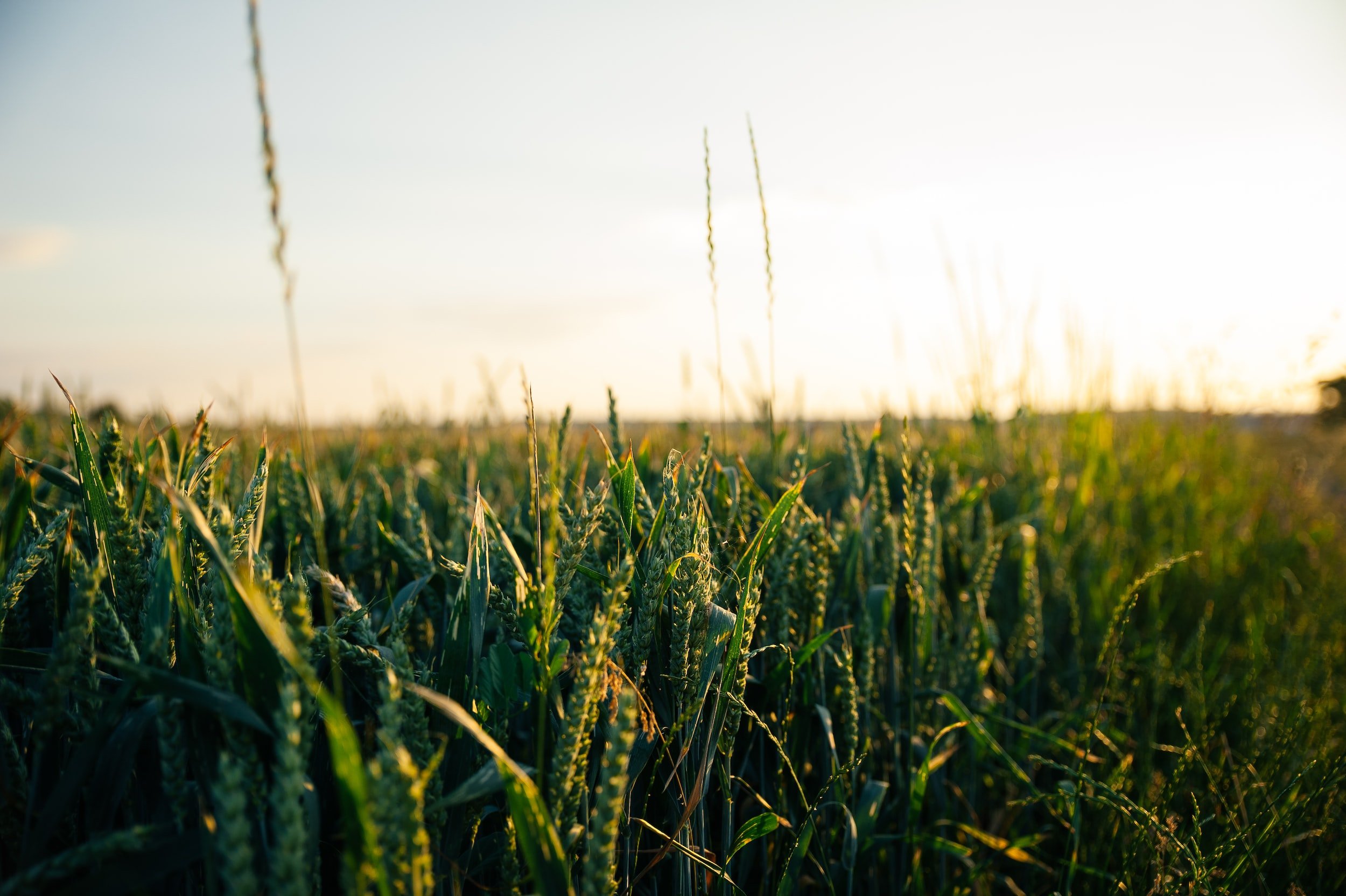What should I add to my garden soil this fall?
/Fall can be a busy season for gardeners, even if you’ve stopped growing crops. Soil is the basic foundation for any successful garden, as healthy soil is needed to grow healthy plants. One important task is amending the soil to improve its structure, address any problems from last growing season and prepare it for the next. season. Amending the soil for new batches of plants is an important part of the gardening process. If a gardener does not do this, their garden will suffer and their plants may not thrive as well as they should. However, this task can be time-consuming with many different tools and steps involved in its execution.
There is no one-step solution to amending soil effectively; instead, each gardener has to find what works best for them. A garden bed with a lot of compost will produce better quality vegetables than a bed with little or none. The key to amending soil is about balancing the nutrients in the soil and adding amendments that encourage those nutrients to be used by plants. It’s important to remember that soil is not just dirt (in fact, some would say it is not dirt at all); rather, it is a microorganism teeming with life. The way you treat your soil can either encourage that life to thrive or undermine it.
The life of soil
Regeneration of the soil is a major part of the sustainable farming movement, as farmers increasingly realize how important it is to preserve the life of, and in, the soil. Since most commercial farming has done just the opposite — monocropping (growing the same crop in the same plot of land year after year), overuse of broad-spectrum pesticides that kill good and bad organisms alike, regular rototilling (which destroys soil structure and promotes the growth of weeds) and other harmful practices — soil in many parts of the world has become depleted. Growing food in depleted soil means that crops fail more often or do not produce as much as they should, or that the food that is grown does not have the full spectrum of nutrients that it should.
What type of soil do you have? Should you get it tested?
If you are planting crops in the ground as opposed to in a raised bed or container, where you have more control over the planting medium from the start, it’s a good idea do a soil test to determine what kind of soil you already have or if it has been depleted of nutrients. This will allow you to see what is missing from your garden's soil and what type of amendment would work best for it.
There are six basic kinds of soil: clay, sandy, peaty, chalky, silty, and loamy.
Clay soil is heavy, sticks together in clumps, and drains poorly. When grown in this type of soil, the roots of your plants are likely to suffocate and become waterlogged, which can lead to root rot.
Sandy soil is primarily composed of sand, which means it does a poor job at retaining any nutrients. It is also very dry and gritty, making it very difficult for plants to grow in this environment.
Peaty soil is damp and spongy. It heats up quickly in the warm seasons and can retain too much water, potentially drowning the roots of your plants or encouraging root rot.
Chalky soil drains well but is full of stones compared to the other types of soil. It is drought prone and nutrient poor, and its alkaline quality means that your plants will develop yellowish leaves and their growth will be stunted.
Silty soil is generally good for growing crops, as it is fertile and may allow for decent drainage and aeration, but it is not quite as fertile and ideal as loamy soil.
Loamy soil is the best kind of soil for growing a food garden. It contains a mix of sand, silt, and clay, has a fine texture, great structure, and adequate drainage. It is full of nutrients, easy to work with, and doesn’t dry out quickly. It will periodically need to be amended with organic nutrients and tends to be a little acidic.
Some soils are a combination of the first five types or alternatively, different areas of your garden may have different types of soil. For that reason, when you do a soil test you should take samples from different sections of your garden.
There are two ways to test your soil: using at-home test kits or sending out soil samples to a lab for testing. Home testing kits are inexpensive and widely available in nurseries or the garden section of home improvement stores. However, for the most accurate results you should send a sample of your soil to your local agricultural extension for testing. You will have to pay a fee for this service, and in the US, the fees for garden soil testing can cost as little as $10 or as much as $200.
Adding microbes to soil
Whether or not you test your soil, most soil that is not loamy or that has been already growing crops in it for a season will benefit from some kinds of organic amendment. The organic matter contained in soil plays a major role in the life of soil; in fact, soil basically consists of organic matter that has broken down. Healthy soil is full of microbes that benefit the environment in a multitude of ways. Microbes can break down dead organic matter, release nutrients back into the soil, regulate climate by absorbing gases, and even produce plant proteins that are essential for photosynthesis.
Microbes are also a source of food. In other words, many of the microbes that break down organic matter can be eaten as well. This is especially true when the breakdown of organic matter creates compounds which can be converted into other nutrients for human consumption. Microbes also produce plant proteins and fats that can be used as food for humans, animals, and even plants themselves. Thus, the regeneration of soil involves infusing it with beneficial microbes that restore balance to it.
Adding microbes to soil can be done in a number of ways, including adding compost, topsoil, or manure. Cow manure, chicken manure, and other commercially available types of manure work well for this purpose. Horse manure will likely burn the roots of your plants and needs to be cured with straw before using in your garden. Human, cat, and dog manure should never be used, as they contain harmful parasites and pathogens. However, some growers claim that dog and cat manure can be composted and safely used in the garden.
When adding organic matter such as compost, leaves and cut grass, you can also add perlite and vermiculite to help aerate your soil. Vermiculite will also help prevent bacterial and fungal problems.
Preparing soil in fall for fall crops
If you are planning to plant crops in the late summer or early fall for harvest in the fall, then your main tasks to complete will involve cleaning up and amending the soil.
Clean your planting beds by removing weeds as well as old plants and roots. Be sure to clear out any fallen fruits or leaves that have started to rot. Rotting leaves and debris attracts pests that will attack your crops.
The amendments described above are great ways to prepare your garden for planting in the fall. If you are planting from seed, adding vermiculite to the soil will help seeds germinate. If you are planting carrots from seed, you can also cover the seeds with a sheet of cardboard to make sure they germinate properly, as these seeds are very sensitive to cold and other fluctuations in temperature. Remove the cardboard after they have sprouted.
If your fall weather includes dips into freezing or near-freezing temperatures at night, you should mulch your plants to help regulate the soil temperature. Better yet, cover them with heavy duty clear plastic, as an unexpected frost can kill your plants instantly. You can stretch the plastic over garden hoops or ¼” or ½” PVC pipe.
Preparing soil in fall for spring crops
If you aren’t planning to plant anything in your garden until spring, one thing that will make your soil healthy and thriving when that time comes is planting cover crops. Cover crops are plants that are grown in order to protect and improve soil health. They include peas, oats, hairy vetch, clover, sorghum, and several others. There are four basic types of cover crops that help replenish the soil with nutrients: grasses (like ryegrass), legumes (like alfalfa), brassicas (like radishes) and non-legumes (like flax). Some cover crops are toxic to pets, so be sure to check before planting.
Cover crops can also be planted as a mulch crop to suppress weeds. In order for them to be effective as either a nutrient booster or as weed suppressant, they need to be planted before winter sets in.
Like this? Please pin!
A perfect season
Fall is the best season to prepare your garden soil for continued growing or for a fallow period before the spring planting season resumes. Whether you grow in one or two seasons or year-round, amending your soil is also a great way to practice sustainable growing, particularly when you plant cover crops. Fall is the perfect time to tend to your garden soil, but this doesn’t mean that you should neglect your soil come spring. It's important to keep in mind what you want to achieve and then amend your soil accordingly, in whatever season you plan to grow.
One of the most important parts of maintaining a healthy environment is the soil ecosystem, even if it is only the soil in your backyard garden.









































If you’re a gardener, you’ve dealt with garden pests before. This is especially true if you have an edible garden. Too many gardeners aim to eliminate pests completely, but this is neither realistic nor good for your local ecosystem. Yet this doesn’t mean that you have to sit back and do nothing when herbivore pests invade your garden and seek to destroy all your hard work. In fact, there are lots of things you can do to minimize the damage from insect pests without reaching for synthetic fungicides or pesticides.